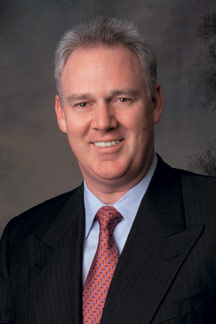In a couple of weeks, the 17th annual ACE America's Claims Event will take Austin, Texas by storm. From June 19-21, 2013, attendees will hear from leading industry experts and connect with their claims comrades about the latest technologies and strategies. Below we caught up with the speakers of two highly anticipated presentations for a glimpse of what's in store.
 Session: The Three Driving Factors for Improving Claims Employee Performance
Session: The Three Driving Factors for Improving Claims Employee Performance
When: June 19, 2013, from 12:45 to 1:25 p.m.
Claims professionals are responsible for a lot of things, from staggering caseloads to complex investigations. We're in the business of resolution, of helping restore a sense of normalcy to policyholders who have suffered tremendous loss. This involves using various hard skills, technologies and resources; however, one too often forgets that it also involves refining “soft skills,” such as empathetic listening and customer service.
Carl Van, ITP, president and CEO, International Insurance Institute, Inc., realizes the crucial role that soft skills play in the claims process. He is the author of more than 75 technical and soft skill workshops being taught throughout the U.S., Canada and the U.K.
Above all else, he is an enthusiastic educator, one who knows how to help managers inspire their staff to achieve optimal results. When asked about the scope of his ACE presentation, Van stressed the attributes of exceptional claims professionals and the fact that claims is, and has always been, “a customer service business.”
Recommended For You
Want to continue reading?
Become a Free PropertyCasualty360 Digital Reader
Your access to unlimited PropertyCasualty360 content isn’t changing.
Once you are an ALM digital member, you’ll receive:
- Breaking insurance news and analysis, on-site and via our newsletters and custom alerts
- Weekly Insurance Speak podcast featuring exclusive interviews with industry leaders
- Educational webcasts, white papers, and ebooks from industry thought leaders
- Critical converage of the employee benefits and financial advisory markets on our other ALM sites, BenefitsPRO and ThinkAdvisor
Already have an account? Sign In Now
© 2025 ALM Global, LLC, All Rights Reserved. Request academic re-use from www.copyright.com. All other uses, submit a request to [email protected]. For more information visit Asset & Logo Licensing.








